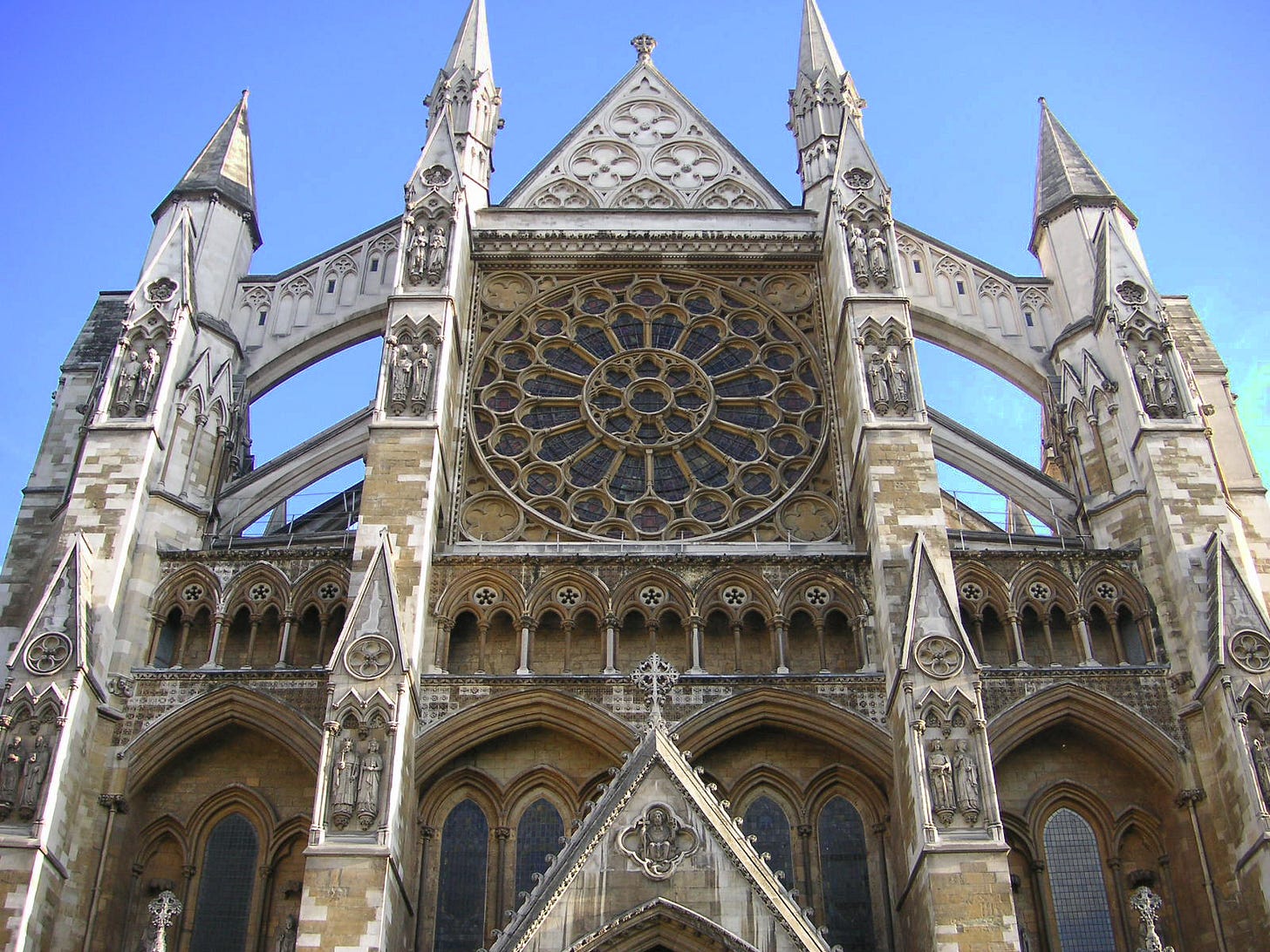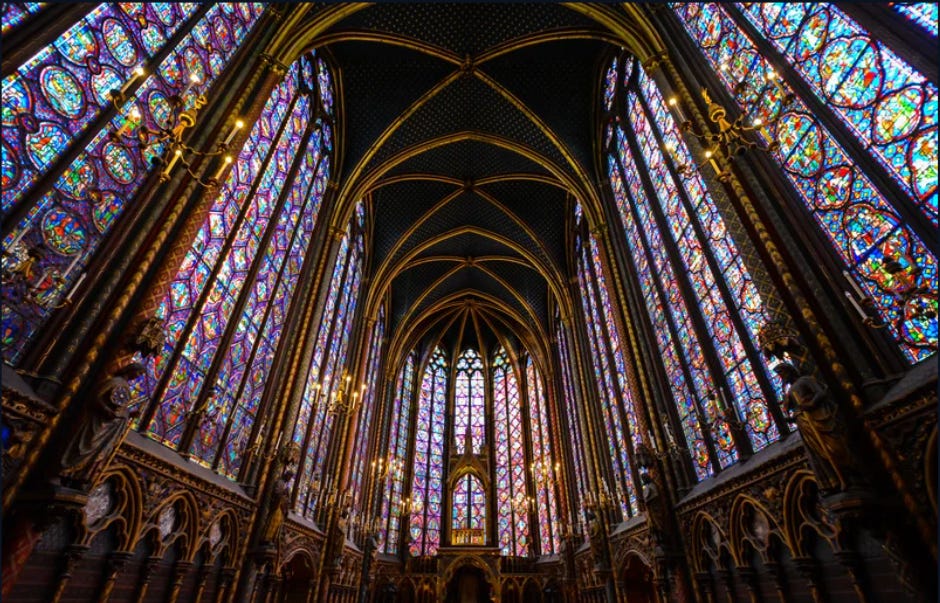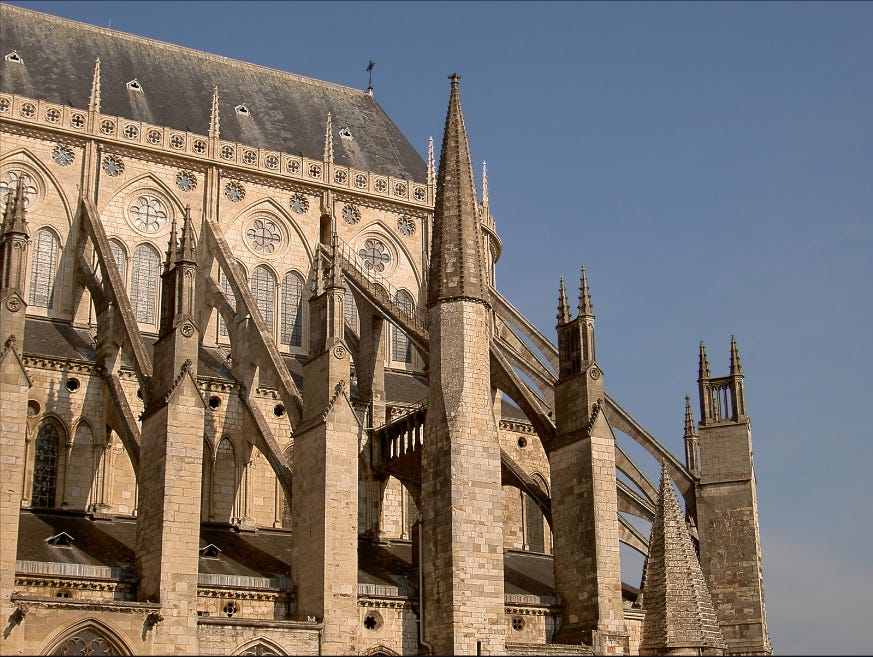Symphony in Stone
If you'd like to learn how engineering can create art, here's an insightful example from Gothic architecture.
"Ah, to build, to build! That is the noblest art of all the arts." - Henry Wadsworth Longfellow
If you’d like to learn how engineering can create inspiring art, here’s an insightful example from Gothic architecture.
Gothic architects used flying buttresses to build taller and thinner walls, which for the first time enabled the crafting of large stained glass windows.
Flying buttresses are the arched supports that extend from the exterior of the cathedral's walls to a solid pier. They transfer the weight of the walls to the ground and remove the need for thick load-bearing walls.

Because of flying buttresses, architects could now build taller and thinner walls, and incorporate a larger surface area for windows.

This launched three hundred years (12th-15th century AD) of experimentation and innovation with stained glass windows.
With colorful and intricately designed scenes, these stunning windows filtered natural light into the cathedral’s interior, and created a mystical and awe-inspiring atmosphere.

Imagine a medieval visitor walking into a Gothic cathedral for the first time — standing in awe, surrounded by soaring stone and windows, while being bathed in luminous, colored light.
Structural engineering, and Art. Tension on the outside, creating art on the inside.
#LikeToLearn
If you enjoyed this post, subscribe to my newsletter for a weekly insight delivered directly to your inbox.
P.S: If you like history, engineering, and art, I recommend visiting a Gothic cathedral, and experiencing what Victor Hugo called “a vast symphony in stone”, with soaring ceilings, filtered light, and intricate carvings.
In the D.C. area (where I live), you can visit Washington National Cathedral. Else, enjoy a trip to Notre Dame (Paris), Westminster Abbey (London), Amiens (1.5 hour train from Paris), Chartres (1.5 hour train from Paris), or Cologne (1 hour train from Frankfurt).





